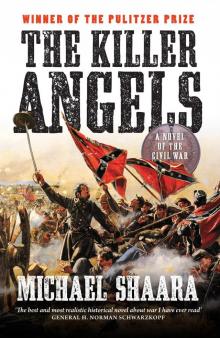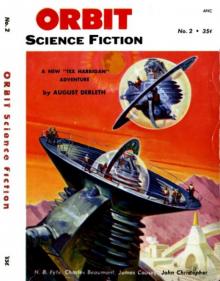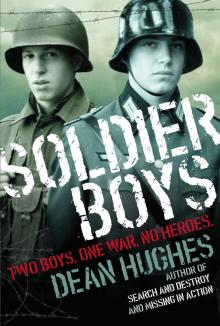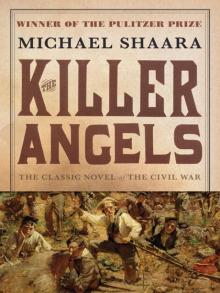- Home
- Michael Shaara
The Civil War Trilogy: Gods and Generals / the Killer Angels / the Last Full Measure
The Civil War Trilogy: Gods and Generals / the Killer Angels / the Last Full Measure Read online
Gods and Generals, The Killer Angels, and The Last Full Measure are works of fiction. Names, places, and incidents either are products of the author’s imagination or are used fictitiously.
A Ballantine Books eBook Edition
Gods and Generals copyright © 1996 by Jeffrey M. Shaara
The Killer Angels copyright © 1974 by Michael Shaara.
The Killer Angels copyright renewed © 2002 by Jeff M. Shaara and Lila E. Shaara
The Last Full Measure copyright © 1998 by Jeffrey M. Shaara
All Rights Reserved.
Published in the United States by Ballantine Books, an imprint of The Random House Publishing Group, a division of Random House, Inc., New York.
Ballantine and colophon are registered trademarks of Random House, Inc.
The novels contained in this omnibus were each published separately by Ballantine Books, an imprint of The Random House Publishing Group, a division of Random House, Inc., in 1974, 1996, and 1998.
Gods and Generals illustration: William B. T. Trego, The Rescue of the Colors (Mercer Museum/Bucks County Historical Society)
The Killer Angels illustration: Gilbert Gaul, Glorious Fighting, 1885 (detail) (Collection of the Birmingham Museum of Art/Gift of John Meyer)
The Last Full Measure illustration: Gilbert Gaul, Holding the Line at All Hazards, 1882 (detail) (Collection of the Birmingham Museum of Art/Gift of John Meyer)
Gods and Generals
Published by Ballantine Books
All rights reserved.
Copyright © 1996 by Jeffrey M. Shaara
eISBN: 978-0-345-43849-2
The Killer Angels
Published by Ballantine Books
All rights reserved.
Copyright © 1974 by Michael Shaara
eISBN: 978-0-345-51373-1
The Last Full Measure
Published by The Random House Publishing Group
All rights reserved.
Copyright © 1998 by Jeffrey M. Shaara
eISBN: 978-0-345-43850-8
Jeff Shaara and Michael Shaara: Three Novels of the Civil War: Gods and Generals, The Killer Angels, The Last Full Measure
Published by Ballantine Books
All rights reserved.
Copyright © 2012 by Jeff Shaara and Michael Shaara
No part of this book may be reproduced or transmitted in any form or by any means, electronic or mechanical, including photocopying, recording, or by any information storage and retrieval system, without permission in writing from the publisher.
www.ballantinebooks.com
eISBN: 978-0-345-53486-6
v3.1
Contents
Cover
Title Page
Copyright
Gods and Generals
The Killer Angels
The Last Full Measure
Excerpt from Blaze of Glory
Gods and Generals
Jeff Shaara
The Ballantine Publishing Group • New York
Copyright © 1996 by Jeffrey M. Shaara
All rights reserved under International
and Pan-American Copyright Conventions. Published
in the United States by Ballantine Books, a division of Random House, Inc.,
New York, and simultaneously in Canada by Random
House of Canada Limited, Toronto.
http://www.randomhouse.com
Library of Congress Catalog Card Number: 97-92954
eISBN: 978-0-345-43849-2
v3.0_r1
Contents
Master - Table of Contents
Gods and Generals
Copyright
Dedication
To the Reader
Introduction
Part One
Chapter 1: Lee
Chapter 2: Jackson
Chapter 3: Chamberlain
Chapter 4: Lee
Chapter 5: Jackson
Chapter 6: Hancock
Chapter 7: Lee
Chapter 8: Hancock
Chapter 9: Lee
Chapter 10: Jackson
Chapter 11: Lee
Chapter 12: Hancock
Chapter 13: Lee
Chapter 14: Hancock
Chapter 15: Lee
Chapter 16: Hancock
Chapter 17: Lee
Chapter 18: Hancock
Chapter 19: Lee
Part Two
Chapter 20: Lee
Chapter 21: Chamberlain
Chapter 22: Lee
Chapter 23: Chamberlain
Chapter 24: Hancock
Chapter 25: Chamberlain
Chapter 26: Hancock
Part Three
Chapter 27: Lee
Chapter 28: Jackson
Chapter 29: Hancock
Chapter 30: Barksdale
Chapter 31: Hancock
Chapter 32: Jackson
Chapter 33: Lee
Chapter 34: Jackson
Chapter 35: Hancock
Chapter 36: Chamberlain
Chapter 37: Lee
Chapter 38: Hancock
Part Four
Chapter 39: Chamberlain
Chapter 40: Lee
Chapter 41: Jackson
Chapter 42: Chamberlain
Chapter 43: Hancock
Chapter 44: Lee
Chapter 45: Hancock
Chapter 46: Jackson
Chapter 47: Howard
Chapter 48: Jackson
Chapter 49: Hancock
Chapter 50: Jackson
Chapter 51: Stuart
Chapter 52: Hancock
Chapter 53: Lee
Chapter 54: Jackson
Chapter 55: Lee
Acknowledgments
Afterword
To Lynne
TO THE READER
In 1974, Michael Shaara published The Killer Angels, a novel about the men who led the fight at the Battle of Gettysburg. It was not an attempt to document the history of the event, nor was it a biography of the characters who fought there. Both have been done, many times, before. What Michael Shaara did was to tell the story of the battle by telling the story of the men, from their points of view, their thoughts, their feelings. It was a very different approach, and it was possibly the first novel of its kind. It also won the Pulitzer Prize. Michael Shaara died in 1988. He was my father.
The impact of his approach, the feeling that the reader truly knows these characters, has drawn an emotional response from a great many people. Over the years, many have expressed their appreciation for my father’s work, whether in letters or in person. They continue to do so. Some have ancestors who shared the battlefields with Lee or Chamberlain, some are people who have simply come to know these characters well, to understand the impact that these men had on the history of this country and on our lives today. And there have been others who have said “I never liked history, but I loved these characters.” It is to all these people, but especially those who learned their American history in often impersonal textbooks, that this story is written.
This is primarily the story of four men: Robert E. Lee, Thomas Jonathan “Stonewall” Jackson, Winfield Scott Hancock, and Joshua Lawrence Chamberlain. Woven throughout the story of these men are the stories of many others, their wives and families, the men who served with them on the field, names many of us know well: James Longstreet, Winfield Scott, “Jeb” Stuart, George McClellan, and characters important not just to the telling of this story, but to history as well: Jefferson Davis, Sam Houston. As The Killer An
gels gave readers a connection to the characters at Gettysburg, this story takes them further back, to the first rumblings of the Civil War, the tragedies and successes of their personal lives, and their experiences as soldiers, to paint a picture of each character as he might have understood his own world. In 1861 every American was faced with the horror of watching their young nation divide, and every soldier—and a great number of civilians—had to make an extraordinary decision, a question of loyalty, of principles, of duty. Those individual decisions in many ways changed our history as a nation. Each character in this book is faced with the same choice, and each makes his decision for different reasons.
This story begins in late 1858 and concludes in June 1863, just prior to the Battle of Gettysburg. I have tried to follow a time line that accurately describes the history as it follows each character. That history and the events that propel this story are true. Most of the dialogue, the thoughts, the characterizations of the men and women, are my offering, my gift to the memory of these extraordinary individuals.
JEFF SHAARA
INTRODUCTION
TWO EXTRAORDINARY events occur in the mid-1840s. First, the United States Military Academy, at West Point, in a stroke of marvelous coincidence, graduates several classes of outstanding cadets, a group of young men who at the time are clearly superior to many of the classes that have preceded them. The second event is the Mexican War, the first time the armed forces of the United States takes a fight outside its own boundaries. The two events are connected, and thus, together, they are more significant than if they had occurred separately, because the events in Mexico served almost immediately as a brutal training ground for these cadets, who are now young officers.
They are a new breed of fighting man, the college-educated professional soldier, and the Mexican War is the first war to which West Point has given commanders. It is not a popular war, is seen by many opponents as nothing more than a land grab, the opportunity for the United States government to flex its muscles over a weaker enemy, and thus gain the spoils: South Texas, New Mexico, Arizona, California. What no one can know at the time is that the experience these young soldiers receive will have a profound effect on the battlefields of their own country in 1861. Not only do these men bring home the terrible visions of death and destruction, the experience that wars are not in fact great and glorious exhibitions, but they bring home something more—the discovery that the old way of fighting a war, the Napoleonic School, is becoming dangerously outdated.
The discovery comes from the use of the latest improvements in technology, for the rifleman and the cannoneer, for the observer and the bridge builder. Mexico is very much a testing ground for the new killing machines: greater range, accuracy, and firepower. And so, these young officers are schooled not only in the skills of traditional command and tactics, but in the vastly improving knowledge of the art itself, of engineering and mathematics.
The effect that all of this will have thirteen years later, on the battlefields of our own country, cannot be underestimated. One of the many great tragedies of the Civil War is that it is a bridge through time. The old clumsy ways of fighting, nearly unchanged for centuries, marching troops in long straight lines, advancing slowly into the massed fire of the enemy, will now collide with the new efficient ways of killing, better rifles, much better cannon; and so never before—and in American history, never since—does a war produce so much horrifying destruction.
But this is not a story about the army, or about war, but about four men. Three of them serve their country in Mexico, two of them spend the decade of the 1850s in a peacetime army with very little constructive work to do. They are not friends, they do not share the same backgrounds. But their stories tell the stories of many others, weaving together to shape the most tragic event in our nation’s history, and so their story is our story.
ROBERT EDWARD LEE
Born 1807, Lee graduates from West Point in 1829, second in his class, with the unequaled record of never having received a single demerit for conduct in his four years as a cadet. He returns home to Virginia to a dying mother and a scandal-laden family, and so resolves that his life shall bring atonement. Lee possesses an unwavering sense of dignity, and is thus often considered aloof, but his dedication to duty and his care for those around him reveal him to be a man of extraordinary compassion and conscience. His faith is unquestioning, and he believes that all of his accomplishments, all events around him, are the result of God’s will.
Lee marries Mary Anne Randolph Custis and has seven children, but he is rarely home—the sacrifice of being a career soldier. He distinguishes himself as a Captain of Engineers, goes to Mexico, and his reputation lands him on the staff of General in Chief Winfield Scott, the grand old man of the army. Lee performs with a dedication and a skill that makes heroes, and Scott promotes him twice, to Lieutenant Colonel. After the war he is named Commandant of West Point, finds it stifling, finds himself growing older with little prospect of advancement beyond his present rank, and he is not a man who will pull strings, or play politics for favors.
In 1855 the army forms the Second Regiment of Cavalry in Texas, and Lee astounds friends and family by volunteering for command. He sees this as his last opportunity to command real troops in the “real” army, and thus spends five years in the cavalry, which ultimately becomes another thankless and unsatisfying job. Serving under the harsh and disagreeable thumb of General David Twiggs, Lee asks for and is granted leave, after receiving word that his father-in-law, George Washington Parke Custis, the grandson of Martha Washington and the patriarch of his family’s home, has suddenly died.
WINFIELD SCOTT HANCOCK
Born 1824 in Pennsylvania, one of twin boys, he graduates West Point in 1844. Hancock serves in Mexico with the Sixth Infantry, but only after waging war with his commanders to let him fight. He leads troops with some gallantry, but misses the army’s great final victory at Chapultepec because he has the flu. He watches from a roof-top while his friends and fellow soldiers, Lewis Armistead, George Pickett, James Longstreet, and Ulysses “Sam” Grant, storm the walls of the old fort.
After the war, Hancock marries Almira Russell of St. Louis, considered in social circles, and by most bachelors there, to be the finest catch in St. Louis. She is beautiful and brilliant, and accepts her role as the wife of an army officer always with good grace and a superb ability to charm all who know her. They have two children, a son and a daughter.
Hancock, a large, handsome man, has the unfortunate talent of making himself indispensable in any assignment he is given, possessing an amazing talent for the drudgery of army rules and paperwork. This launches him into a dead-end career as a quartermaster, first in Kansas, then in Fort Myers, Florida, where the Everglades assaults the soldiers there with crushing heat and disease, snakes and insects, and the constant threat of attack from the Seminole Indians. He soon is transferred back to “Bloody Kansas,” as the army tries to maintain control of rioting civilians confronting each other over the issue of slavery. Moving farther west with the army, he is named Quartermaster for Southern California and assumes a one-man post in the small but growing town of Los Angeles. But Hancock is never content to be a quartermaster, cannot forget his days in Mexico leading infantry, and aches for duty as a real soldier.
THOMAS JONATHAN JACKSON
Born 1824, Jackson arrives at West Point as a country bumpkin with homespun clothes and no prep school training, unlike the brilliant George McClellan or the aristocratic Ambrose Powell Hill, and has great difficulty at the Point. Jackson struggles with the studies, but has no vices, and so spends his time improving, and acquires a reputation as rigid and disciplined, and graduates in 1846 in the upper third of his class. All who know him there are certain that if the courses had gone a fifth year, Jackson would have reached the top.
In Mexico, as an artillery officer, he quickly shows his commanders he is not only suited for the heat of battle, but thrives on it. Jackson leads his two small guns into the fight with an
intensity that puts fear into the enemy, and into many who serve with him. He is promoted three times, more than anyone in the army, and returns home a major.
After the war, Jackson grows weary of peacetime army life and applies for a position as an instructor at the Virginia Military Institute, in Lexington, Virginia. He is far from the most qualified candidate, but his war record and the fact that he is a native of western Virginia, and might assist in drawing recruits from that area, gain him the job. Thus he resigns from the army in 1851; he becomes a major in the Virginia Militia and embarks on a career in academics, for which, justifiably, he will never receive praise.
Jackson becomes a Presbyterian, and earns a reputation in local circles as a man of fiery religious conviction, if not a bit odd in his personal habits. He is seen walking through town with one hand held high in the air, thought by many to be constantly in prayer, and he is often sucking on lemons. He violates the law by establishing a Sunday school for slave children in Lexington, and justifies it by claiming it is the right of all of God’s creatures to hear the Word.
In 1854 Jackson marries Eleanor Junkin, daughter of the president of Washington University, but a year later she dies in childbirth, as does the baby. Jackson’s grief overwhelms him. He takes a long tour of Europe to recover emotionally, but his physical health, and his eyesight, give him constant trouble.
In 1857 he marries again, this time to Mary Anna Morrison, the daughter of a minister who is the founder of Davidson College in North Carolina. Their first child survives only a month. The tragedies of this time in his life place him more firmly than ever into the hands of his God, and he sees every aspect of his life, every act, as only a part of his duty to please God.
JOSHUA LAWRENCE CHAMBERLAIN
Born in 1828, Chamberlain graduates from Bowdoin College, Brunswick, Maine, in 1852. He is considered brilliant, with an amazing talent for mastering any subject. He enrolls in the Bangor Theological Seminary, considers the ministry as a career, but cannot make the final commitment, for though he often preaches Sunday services, he does not hear the calling. Chamberlain returns to Bowdoin as a teacher and is named to the prestigious Chair formerly held by Dr. Calvin Stowe. Chamberlain is now Professor of Natural and Revealed Religion, and speaks seven languages.

 The Killer Angels: The Classic Novel of the Civil War
The Killer Angels: The Classic Novel of the Civil War 2066 Election Day
2066 Election Day For Love of the Game
For Love of the Game The Book
The Book Galaxy
Galaxy Conquest Over Time
Conquest Over Time Potential Enemy
Potential Enemy Soldier Boy
Soldier Boy Wainer
Wainer The Civil War Trilogy: Gods and Generals / the Killer Angels / the Last Full Measure
The Civil War Trilogy: Gods and Generals / the Killer Angels / the Last Full Measure The Killer Angels
The Killer Angels